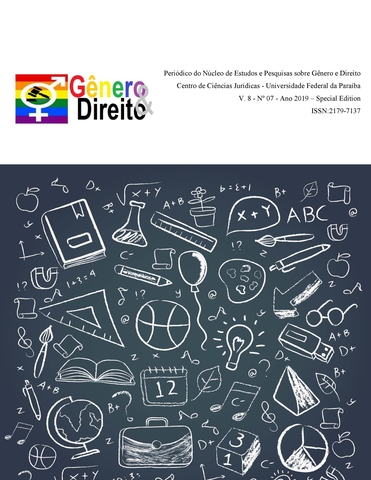LANGUAGE FEATURES OF BOOKS FOR CHRISTIAN TATARS AND KARAMAN TURKS
DOI:
https://doi.org/10.22478/ufpb.2179-7137.2019v8n7.50046Palavras-chave:
baptized Tatars, grunts, Turks, Karamanlids, dialects, linguistic features, borrowingsResumo
This article is carried out in line with comparative studies and is devoted to the study of the specific language features of baptized Tatars and Karamanlid Turks. The need to study this topic is caused by increased attention to the Kryashen and Karamanlid dialects, their linguistic features and history. The objects of study were religious texts, textbooks and literary works in Kryashen and Karamanlid dialects. As the subject of the study, the language features of these texts were examined, as well as the history of the appearance of baptized Tatars and Karamanlid Turks. The scientific novelty of this work lies in the fact that the Kryashen and Karamanlid dialects were studied for the first time in a comparative aspect. The analysis was based on data from a continuous sample of explanatory, etymological, encyclopedic dictionaries of the Tatar, Turkish, and Ottoman-Turkish languages based on the following sources: religious texts, textbooks, and literary works. The theoretical basis of this study is the following main points: language and religion are interconnected and interdependent; phonetic and lexical features reflect the specifics of the language; sacred texts, textbooks and literary works make it possible to identify the history and origin of the people, the belonging of the language to certain language groups
Downloads
Referências
Anzerlioğlu, Y. (2003). Karamanlı Ortodoks Türkler [Karamanlı–die orthodoxen Türken]. 2. Baskı. Ankara: Phoenix, 432 p.
İbar, G. (2010). Anadolulu hemşehrilerimiz: Karamanlılar ve Yunan harfli Türkçe. Türkiye İş Bankası Kültür Yayınları.
Guler, O., Kirillova, Z. N., & Liaisan, S. (2018). Lexical Features of Christian Tatar Subdialects. Amazonia Investiga, 7(15), 185-189.
Nurieva, F. S., Kadirova, E. K., Kuzmina, K. K., & Khadieva, G. K. (2016). Translation practice and educational activities of the christian missionary NI Ilminsky. European Journal of Science and Theology, 12(6), 113-121.
Gabdrakhmanova, F. H., Zamaletdinova, G. F., Zamaletdinov, R. R., Sattarova, M. R., & Khusnutdinov, R. R. (2018). Ethnosterootypes in Tatar and Turkish paremies. Dilemas Contemporáneos: Educación, Política y Valores, 6.
Aminova, A., Gilazetdinova, G., & Edikhanov, I. (2014). Problems of ethnocultural identity and cross-language communication. Journal of Language and Literature, 5(3), 29-42.
Miller, M. G. (1974). The Karamanli-Turkish texts: the historical changes in their script and phonology. Indiana University.
Chirkova, M. A. (1891). The Holy Gospel of our Lord Jesus Christ in the Kryashensky language. Kazan: Type. 333 p.
Emelyanov, Y. E. (1879). Poems in the baptized Tatar language. Kazan: Type. M.A. Gladysheva, 37 p

